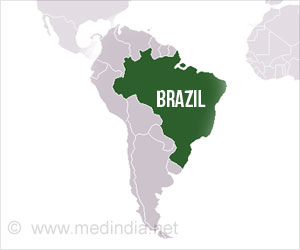A new upper limit on the total number of people who could become infected by the Zika virus in the first wave of the current epidemic has been estimated by researchers.

‘As many as 93 million people in Latin America and the Caribbean, including 1.6 million childbearing women, are at risk of Zika infection over the next two to three years of the epidemic.’





Because these totals reflect the sum of location-specific estimates across the region, the researchers stress that it is important to note that these numbers represent a worst-case scenario. "In other words, we think these projections may be pretty good for a location where Zika shows up and starts an epidemic, but at the same time we acknowledge that due simply to random chance and the fact that some places are relatively isolated and sparsely populated, the virus won't make it to every single corner of the continent," Perkins said.
Perkins also pointed out that it is very important to note that the numbers that the researchers report are infections, which are not the same as clinical cases.
"Only about 20% of people who are infected develop any symptoms whatsoever, and even fewer than that will seek medical care and show up in government statistics," he said.
One of the most important ideas underlying the results is the concept of "herd immunity". This means that after the virus has been spreading for a while, so many people become immune to it that infectious mosquitoes start running out of susceptible people who can keep the epidemic going. Consequently, the epidemic dies out before it can infect everyone.
Advertisement
Perkins pointed out that the World Health Organization in February 2016 declared the Zika epidemic to be a public health emergency of international concern. At that time, there was widespread concern about Zika, but there were no good estimates of the potential scale of the problem.
Advertisement
The researchers did not use any data from the current epidemic, but instead relied on what was known about dengue and chikungunya from similar epidemics in the past.
"In this research, we were interested in seeing what we could come up with at the earliest stages of the epidemic before we had the luxury of lots of data to work with," Perkins said. "By the time we have enough data to make forecasts based on traditional approaches, much of the damage has already been done by the epidemic and it is too late for the research to be actionable."
The research is described in a paper appearing the journal Nature Microbiology.
Source-Newswise









